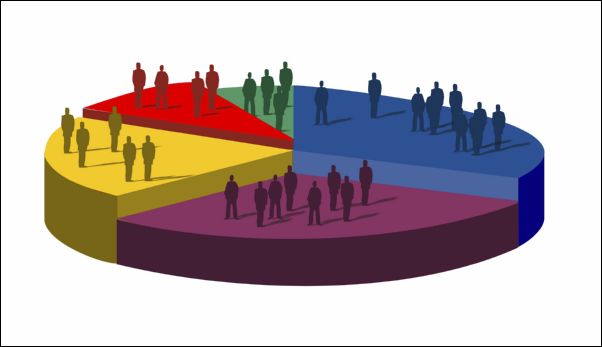Certain situations such as a longer life expectancy, a baby boom, and migrant-settlers have resulted in the single-greatest surge in UK population figures since records started. The population in England and Wales has increased by some 3.7 million people in the last 10-years, as revealed in the latest census figures, which now brings the population to a total of 53.1 million. At least fifty-percent of the increase has come about due to new settlers, with this being the second time that net migration has helped to significantly increase the population.

This increase is approximately half a million more than what was estimated at the time of the previous census, which can be reasoned by more migrants and improved counting, as stated by the Office of National Statistics (ONS). Latest figures compare to an extra 1.6 million in the decade before. The increase in the population is in no way spread evenly across the two nations, with almost fifty-percent of the increase found to come from London and South East of England.
In truth, a lot of the towns and cities situated in the north of England saw a static-hold or decrease in population, with a notable exception being Greater Manchester. Due to the regional differences, the population average estimated at 371 people per every square kilometre is somewhat deceptive as London wildly distorts these figures. In the capital, it is estimated that a whopping 5200 people live per square kilometre, which means people are left fighting for desirable schools, limited housing options, space on the tube, cycle lanes and more. If London is excluded from these figures, the average across the country would drop to 321. The census statistics, completed on the 27th March 2011, resulted in a varied response which ranged from optimism that the country is able to cope to those concerned with the prospect of a bursting Britain.
It is believed that the South East and London are the main parts of the country which seem to be getting overcrowded, rather than the nation as a whole. The latest figures indicate authorities in the north of the country seem to have a problem in the opposite direction. England does seem to be facing an unsustainable pressure on its housing, public transport, road network, and green space, and therefore it has been suggested that it might be time limit our numbers to give an example to other nations.
The most evident increase in the population nation-wide was seen with the very young and very old. Pre-school children accounted for 3.5 million in the 2011 census, which came in at 406,000 more than the previous decade, with a 12-percent increase (the highest) found in the West Midlands. Conversely, it is now estimated that 1 in 6 Britons is aged sixty-five plus, with the highest increase seen with those 90 plus, which reflects in the longer life-expectancy of today’s public. Also, with the regional differences in mind, it has become apparent that eleven local authorities now have a population with a quarter aged 65 plus, with the largest authority being Christchurch, Dorset with almost 30-percent.
This noticeable age distribution can have significant implications on the local services offered, such as those relating to school, social care, and hospitals, as well as the tax revenue expected by councils, with this coming from both the local population and Whitehall. A discussion is continuing on the exactness of this information, with the Westminster council, for instance, accusing the ONS of under-counting, which might leave the council without the rightful funds, and this could be the last census to be taken. In regards to baseline figures, the greatest concern with this 7-percent increase in population was related to housing; although the varied age structures has the greatest implications for education and health. Whatever the results really were, it is sure that we live in a rapidly changing Britain, and we have to adapt as much as we can along the way.
Rob is a old age care product designer working for Nexus Care Products. He is fascinated by the changing face of the UK population, and how health knowledge and medical technology are extending our lives.
The Changing Face Of Britain’s Age Demographics

